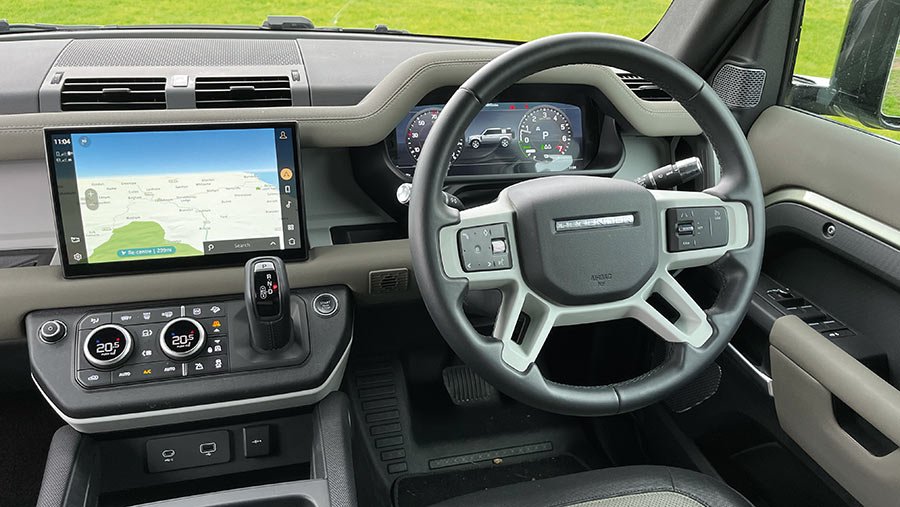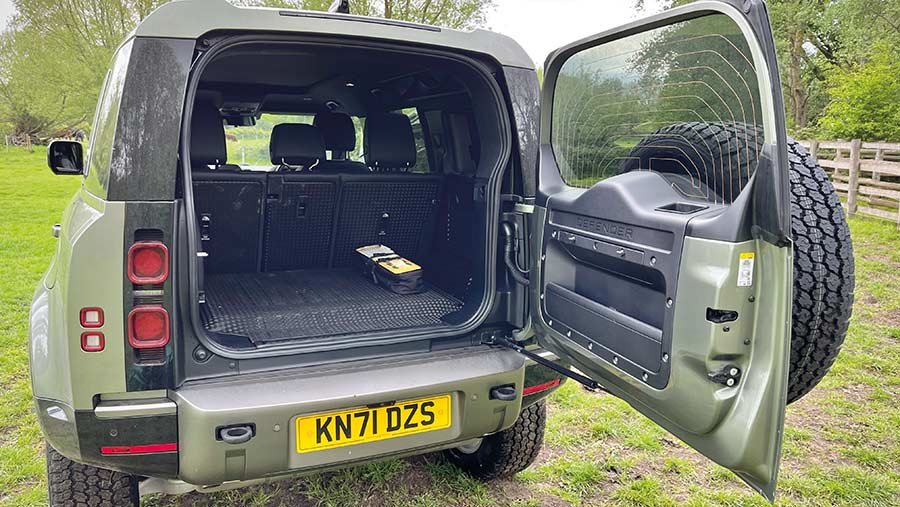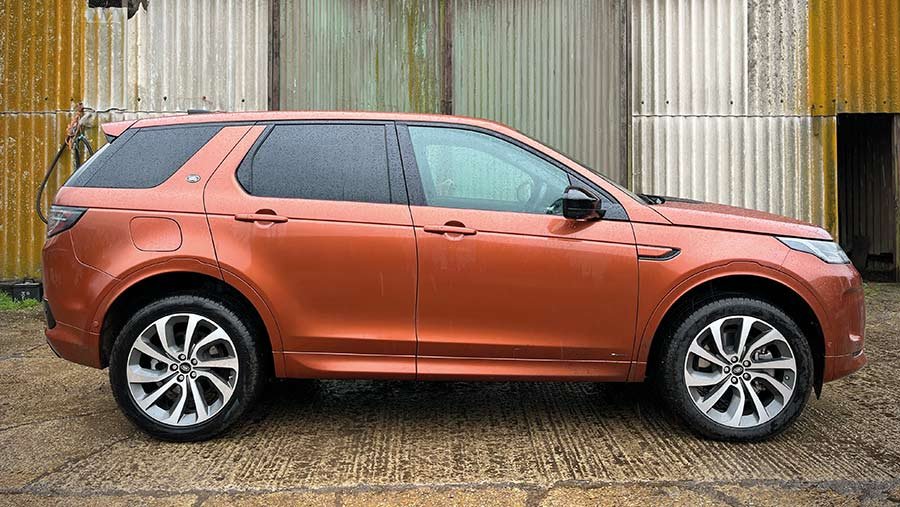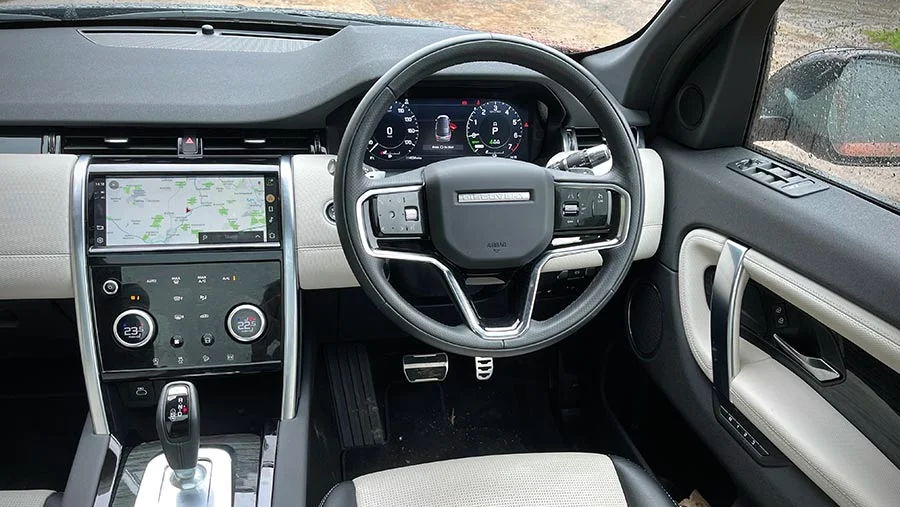The Land Rover Defender’s transformation from rough, tough and gruff to clean, green and surprisingly serene has been completed with the addition of a plug-in hybrid model.
Gone are the beat ‘em straight panels, rudimentary interior and rumbly diesel of the unkempt old workhorse – qualities no longer befitting a vehicle now operating in £60k territory and with sales aspirations beyond those who simply live and work in the countryside.
This version combines a lively petrol engine with an electric motor and battery pack, and is only available as a five-door, mid-wheelbase 110.
See also: First impressions: Ineos completes Grenadier 4×4 development
That excludes the two-seat commercial Hard Top and the compact 90, with the latter’s shorter chassis offering insufficient space to accommodate the batteries.
In theory, PHEV power offers motorists a handful of potential advantages over all-electric.
For starters, the inclusion of a combustion engine makes it far better suited to towing, and having an easy-to-replenish 90-litre tank eliminates range anxiety.
Compared with pure combustion, there’s also the potential for lower running costs if the electric element of the powertrain is fully exploited through regular charging, thus keeping petrol use to a minimum.
And, with the two power sources combined, it can provide zesty performance.
The catch is the price. This model starts at a whisker under £66,000 and our test vehicle had £8,000 worth of typical extras, making it several grand more expensive than a six-cylinder equivalent.
Company car buyers might be able to offset some of that through tax savings – benefit-in-kind is 19% – though there are sweeter financial perks for going fully electric.
Land Rover Defender 110 P400e
- Engine 2-litre petrol
- Max power 404hp
- Max torque 640Nm
- Transmission Eight-speed auto AWD
- Claimed combined economy 72-86mpg
- Economy as tested 31mpg
- Electric range 25-27 miles
- 0-60mph 5.4sec
- Top speed 119mph
- Weight 2,600kg
- Towing capacity 3,000kg
- Starting price £65,915
- Price as tested £73,755
How does it look?
© MAG/Oliver Mark
It’s a big lump. At 2.1m wide, 2m tall and 5m long with the spare wheel on the back, it feels more like a previous generation Discovery in stature, dwarfing the original Defender.
It’s heavy too, with the battery and motor adding about 300kg for a total that is near 2.6t.
The iconic boxy silhouette is still there, albeit with a more rounded waistline and flared wheel arches, and the khaki green of our test car is pleasantly restrained compared to the all-black versions that seem to monopolise dealer forecourts.
How does it work?
While the rest of the Defender range remains reliant on raw combustive power, the PHEV mixes petrol with electric.
The senior party in the powertrain department is a turbocharged 2-litre, four-cylinder Ingenium engine that, at 296hp, is no shrinking violet. The same engine is used in the petrol-only P300 model.
It can be used in unison with the 139hp electric motor to deliver a combined maximum output of 404hp and 640Nm, which ranks just below the hench V8 model in terms of power and pace.
The motor is fed by a 19.2kWh lithium-ion battery buried under the boot floor. Officially, this should be enough for a 27-mile electric-only odyssey in “EV” mode, but we found 20 miles a more realistic target. That’s some way shy of equivalent vehicles from Volvo and BMW.
“Hybrid” is the default mode. This trusts the car’s computer with deciding when and how to flip-flop between the power sources, which it does almost imperceptibly.
There’s a slight delay on power uptake as it works out which, or both, elements of the powertrain to employ; but once decided, it heads forth with puppyish enthusiasm.
There’s also a mode called “Save” that maintains battery charge by only engaging the engine, with minor energy top-ups by way of regenerative braking.
Charging can be a chore, but is worth getting accustomed to, as it’s the only way to claw back the higher initial investment over a standard model.
A 50kW rapid charger is the one you want, pumping the battery back to 80% full in half an hour.
A 7kW wall box does the same job in two hours, while a domestic three-pin socket is an overnight affair, at seven hours.
Usefully, it’s possible to set the time that it starts and stops charging to target off-peak fees.
Economy depends entirely on what you’re up to.
A little jaunt to town and back after a full recharge will cost peanuts, but long hauls during which the battery supply is quickly exhausted can be expensive – to the tune of about 30mpg.
What’s the interior like?

© MAG/Oliver Mark
One of the reasons for the lofty list price is that the PHEV is only available in Land Rover’s X-Dynamic trim or above.
Among the raft of standard kit at this level are 20in alloys, heated and cooled memory front seats, and the firm’s Terrain Response 2 system.
The finish is a cross between luxury and faux workaday. In places, it is eminently practical, with wipe-clean plastic footwells, useful grab handles, and storage areas in abundance.
Everything feels solid and chunky, though not necessarily in a £74k kind of way.
Front row seats are comfortable and surprisingly distant from each other, while the rear three get decent headroom and legroom, plus access to air-con controls and a good spread of charging ports.
The boot is conveniently square but, with the floor raised by 30mm to accommodate the batteries, marginally smaller than the standard petrol and diesels.
As a result, there’s no third row seating option, though buyers can spec a “jump seat” that replaces the front centre console to increase carrying capacity to six.
Off-road
For all its fripperies, this Defender – and the rest of the range, for that matter – is well equipped for proper off-roading.
It has permanent four-wheel drive, and the twin-speed transfer box provides a low range that can be driven by either petrol or electric, as the power sources are clutched separately to the ZF eight-speed automatic transmission.
This, and settings for the centre and rear differentials, are controlled through the Terrain Response 2 system.
As usual there are various modes for driving on mud, sand and rocks, which alter the response of the throttle and transmission, as well as a “low traction launch” setting.
Ground clearance is 218mm in road mode but 290mm with the air bags fully inflated, transforming the approach angle from 30deg to 37.5deg and departure from 38deg to 40deg.
Wading depth is 900mm – 50mm up on coil-sprung versions – and our model came shod on Goodyear Wrangler AT tyres.
The one downside is the reduced towing capacity, down 500kg to 3,000kg.

© MAG/Oliver Mark
FW verdict
The current state of fuel prices means that PHEVs, for all their shortcomings, become more appealing by the day.
But to recoup their greater up-front cost, buyers must avoid the petrol pumps and maintain a fastidious charging regime.
For many rural buyers, the diesel will make more sense – it’s cheaper to buy, better for towing, and available as a commercial Hard Top, in either 90 or 110 guise.
Likes and gripes
✔ Rapid charging standard
✔ Handles well
✔ Good off-road
✘ Poor economy when the battery is depleted
✘ Expensive
✘ Reduced towing capacity
Discovery Sport

© MAG/Oliver Mark
A slightly cheaper way into Land Rover’s PHEV family is the Discovery Sport P300e which, mercifully, you can get on the road for less than £50,000.
It comes with a 1.5-litre, three-cylinder petrol engine and 109hp electric motor to produce a combined 309hp and 540Nm.
It takes just 6.2secs to get from 0-60mph, which is marginally slower than the Defender, and top speed through the eight-speed automatic transmission is 130mph.
The biggest difference is that, like the Range Rover Evoque PHEV, the electric drivetrain runs the rear wheels only, so it’s not possible to have four-wheel drive in EV mode.
Inside, it has the same touchscreen as the Defender and most of the mod-cons, which come as part of the R-Dynamic SE package.

© MAG/Oliver Mark














